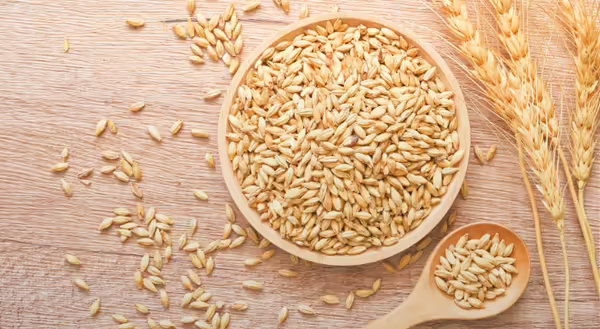
Barley is a whole grain that brewing companies most often desire to produce malt. However, it’s more than just a beer necessity. Barley is a wonderful addition to many different varieties of soups and may be a cabinet staple this time of year.
Out of all the whole grains, barley is just behind bulgur wheat as providing the most amount of fiber. Eating a diet high in fiber and low in saturated fats, may reduce the risk of heart disease. Whole grain barley in its hulled form is also rich in antioxidants, vitamins and minerals. Hulled barley means the inedible hull was removed carefully, so that the bran layer stays intact. However, much of the barley we eat in the United States is pearl barley, which is missing some or its entire bran layer. Pearl barley is less chewy than hulled and takes about an hour to cook. Quick-cooking barley is similar to pearl barely in taste and nutrients but is much quicker to cook. Neither pearl nor quick-cooking barley is considered a whole grain, but they still offer fiber and other valuable nutrients.
While soup is a great avenue for barley, it is much more versatile. It can be used much like rice. Try it in a casserole, stir-fry, stuffed green peppers, or breakfast porridge. Cooked barley can be refrigerated for three to 5 days or frozen in airtight containers or freezer bags for up to one month for best quality. Give barley a try and add a new grain to your food repertoire.
About the Author
Jenna Smith is a Nutrition and Wellness Educator with University of Illinois Extension, serving Livingston, McLean, and Woodford Counties. Smith uses her experience as a registered dietitian nutritionist to deliver impactful information and cutting-edge programs to Livingston, McLean, and Woodford Counties and beyond.
